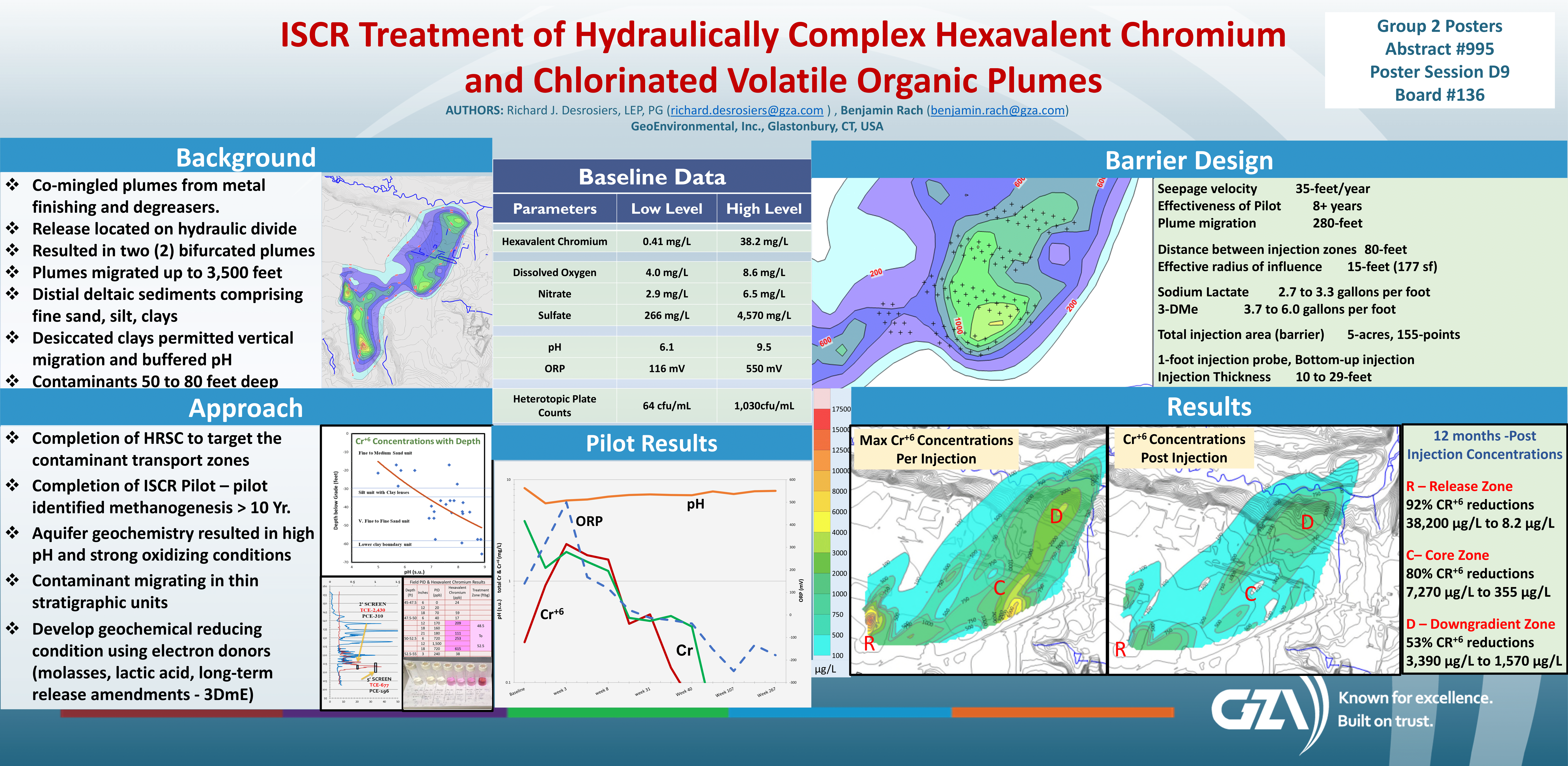Insights
ISCR Treatment of Hydraulically Complex Hexavalent Chromium and Chlorinated Volatile Organic Plumes
At a Glance
Background/Objectives
An industrial facility utilized metal finishing process lines (sulfuric acid, nitric acid and chromic acid) which were located adjacent to a degreaser pit. The process wastewater was directed to historic cypress holding tanks and then a wastewater treatment plant where it was treated with sodium metabisulfate to control oxidation-reduction potential and lime and/or sulfuric acid to control ph. Over 50-years, hexavalent chromium (Cr+6) and cVOC spills/leaks resulted in releases to the subsurface which was located over a hydraulic groundwater divide. This resulted in two bifurcated co-mingled plumes that migrated over 3,000 feet.
Subsurface conditions consisted of a fine to coarse sand overlying a deltaic fine sand, silt, and/or silty/clay deposit overlying a lacustrine clay aquitard. A strong downward vertical gradient was present in the upper aquifer than dissipated at the lacustrine boundary. There was a strong downward vertically gradient that permitted the the plume to migrate through the deltaic sequences (including descanted clays) to depth of 50 to 80 feet below grade (35 to 65 feet below the water table). The fine-grained deltaic geology resulted in horizontal seepage velocities in the 45 to 75 feet per year. These seepage velocities resulted in these plumes being strongly oxidized resulting in little degradation of the Cr+6 and the abiotic aquifer result in little degradation of the cVOCs.
Groundwater data reported Cr+6 concentration of 38 mg/L at the source and 10 mg/L approximately 1,500 in the downgradient plume. The goal was to design a remedial approach to convert the more mobile/toxic Cr+6 to the less mobile/toxic Cr+3 and the immobile Cr(OH)3 while concurrently achieving reductive dichlorination of the commingled VOCs. This perennation will focus on the reduction in the hexavalent chromium concentrations.
Approach/Activities
The remedial strategy began with bench scale microcosm studies to define amendment selection. A field pilot studies was implemented and identified that combining amendments that methanogenesis was observed 10-years after the initial field pilot. These data were then used to design barrier walls permitting the natural groundwater flow to migrate through the ISCR barriers to reduce the contamination. This approach would result in less direct injection points and would reduce the greatest mass in the plumes prior to implementing a monitored natural attenuation final remedy.
The ISCR barriers were injection within the source area adjacent to and beneath the buildings and downgradient within the dissolved plume. Four barriers were used at the source and five in the downgradient plume. A total of 5-acres were treated with 155-injection points. The alternative would have been a traditional direct injection approach requiring a total of 1,230 points to achieve the same coverage, assuming the injection points were 30 feet on center.
The use of high-resolution site characterization proved invaluable in the emplacement of the amendments.
Results/Lessons Learned
The injection program was successful in reducing the concentration of hexavalent chromium after a single application. In general, the concentration in the downgradient plume after approximately 1-year were less than the remedial objection of 500 µg/L and in many monitoring wells less than 100 µg/L. At the source area similar reduction were observed; however, contaminated groundwater beneath a secondary building has migrated beyond the building footprint resulting is some rebound requiring a second applicated after 7-years, to further treat the increased concentration migrating for the former source area. The concentration at the source were reduced to non-detect.
Besides the onsite monitoring well reflection reduction, further downgradient off-site monitoring is reporting lower concentration as the total mass in the plume has been reduced shirking the plume. The take-away is that with good site characterization and defining the correct amendment and designing/targeting the injection placement will result in successful ISCR injection programs implemented with a single application.
